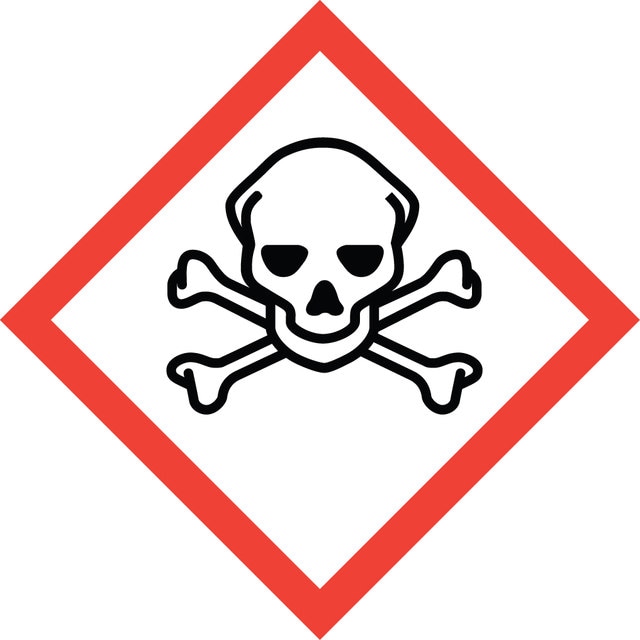47980
Fumaronitrile
purum, ≥98.0% (GC)
Synonym(s):
trans-1,2-Dicyanoethylene
Sign Into View Organizational & Contract Pricing
Select a Size
About This Item
Linear Formula:
NCCH=CHCN
CAS Number:
Molecular Weight:
78.07
Beilstein:
969245
EC Number:
MDL number:
UNSPSC Code:
12352100
PubChem Substance ID:
grade
purum
Assay
≥98.0% (GC)
bp
186 °C (lit.)
mp
93-95 °C (lit.)
SMILES string
N#C\C=C\C#N
InChI
1S/C4H2N2/c5-3-1-2-4-6/h1-2H/b2-1+
InChI key
KYPOHTVBFVELTG-OWOJBTEDSA-N
Looking for similar products? Visit Product Comparison Guide
Other Notes
Precursor of the corresponding amidate, a cross-linking agent for modifying proteins via amidation according to Davies and Stark
Signal Word
Danger
Hazard Statements
Precautionary Statements
Hazard Classifications
Acute Tox. 3 Oral
Storage Class Code
6.1D - Non-combustible acute toxic Cat.3 / toxic hazardous materials or hazardous materials causing chronic effects
WGK
WGK 3
Flash Point(F)
Not applicable
Flash Point(C)
Not applicable
Personal Protective Equipment
dust mask type N95 (US), Eyeshields, Gloves
Regulatory Information
新产品
This item has
Choose from one of the most recent versions:
Already Own This Product?
Find documentation for the products that you have recently purchased in the Document Library.
Yinlong Yang et al.
Biomaterials, 33(31), 7803-7809 (2012-07-24)
We report a new strategy of using carrier-free pure near-infrared (NIR) dye nanoparticles (NPs) to achieve highly luminescent NIR fluorescent probes for in vitro and in vivo imaging. Bis(4-(N-(2-naphthyl)phenylamino) phenyl)-fumaronitrile (NPAPF) NPs are shown to exhibit favorable biocompatibility, wide-range pH
J M Wyatt et al.
Biodegradation, 6(2), 93-107 (1995-06-01)
Effluent from the manufacture of acrylonitrile is difficult to biodegrade. It contains nine major organic components: acetic acid, acrylonitrile, acrylamide, acrylic acid, acrolein, cyanopyridine, fumaronitrile, succinonitrile, and maleimide. A range of bacteria have been isolated that can grow on, or
R Schlegelmilch et al.
Journal of applied toxicology : JAT, 8(3), 201-209 (1988-06-01)
Two aliphatic nitriles, acetonitrile and fumaronitrile were tested for their genotoxic potential in three mutagenicity test systems: the Salmonella/microsome-assay, an assay using Saccharomyces cerevisiae (strain D7), and the bone marrow micronucleus test. Both compounds were tested with and without metabolic
Taegweon Lee et al.
Journal of the American Chemical Society, 131(5), 1692-1705 (2009-01-17)
A new series of heterocyclic oligomers based on the 1,3,4-oxadiazole ring were synthesized. Other electron-deficient cores (fluorenone and fumaronitrile) were introduced to investigate the oligomers as n-channel materials. The physical properties, thin film morphologies, and field-effect transistor characteristics of the
Wolfgang Knoll et al.
Organic letters, 12(10), 2366-2369 (2010-04-20)
Photolysis of aziadamantanes in the presence of fumaronitrile (FN) unexpectedly afforded conjugated 2H-azirines resulting from addition of the carbene to the CN triple bond. This represents the first example of a direct azirine formation starting from an alkylcarbene for which
Our team of scientists has experience in all areas of research including Life Science, Material Science, Chemical Synthesis, Chromatography, Analytical and many others.
Contact Technical Service